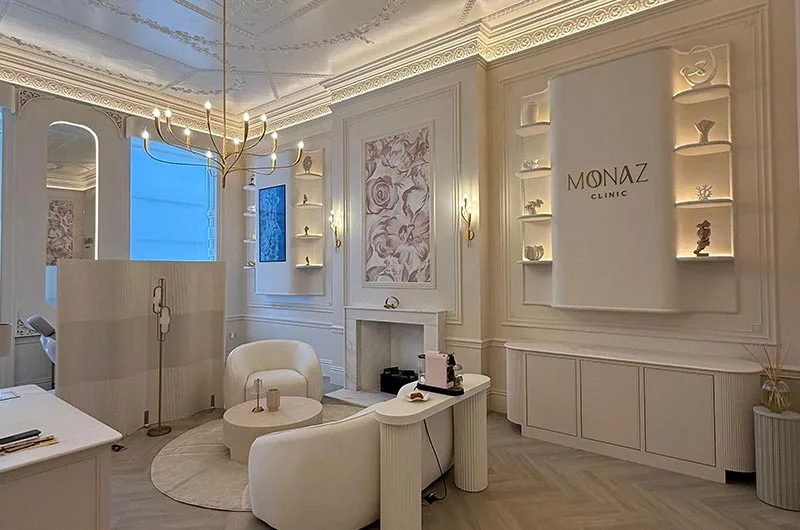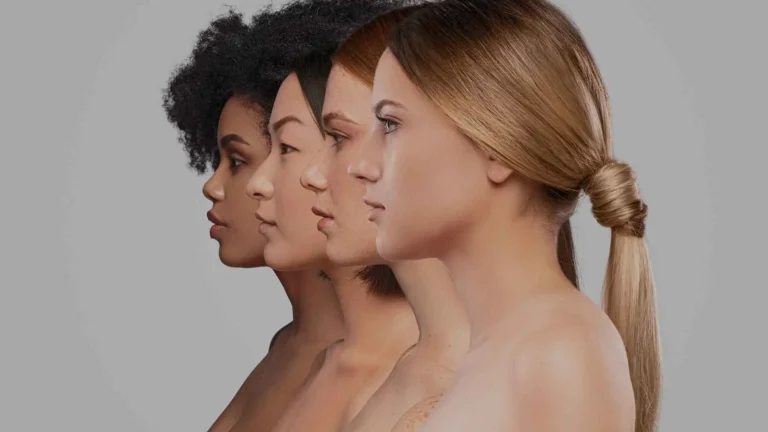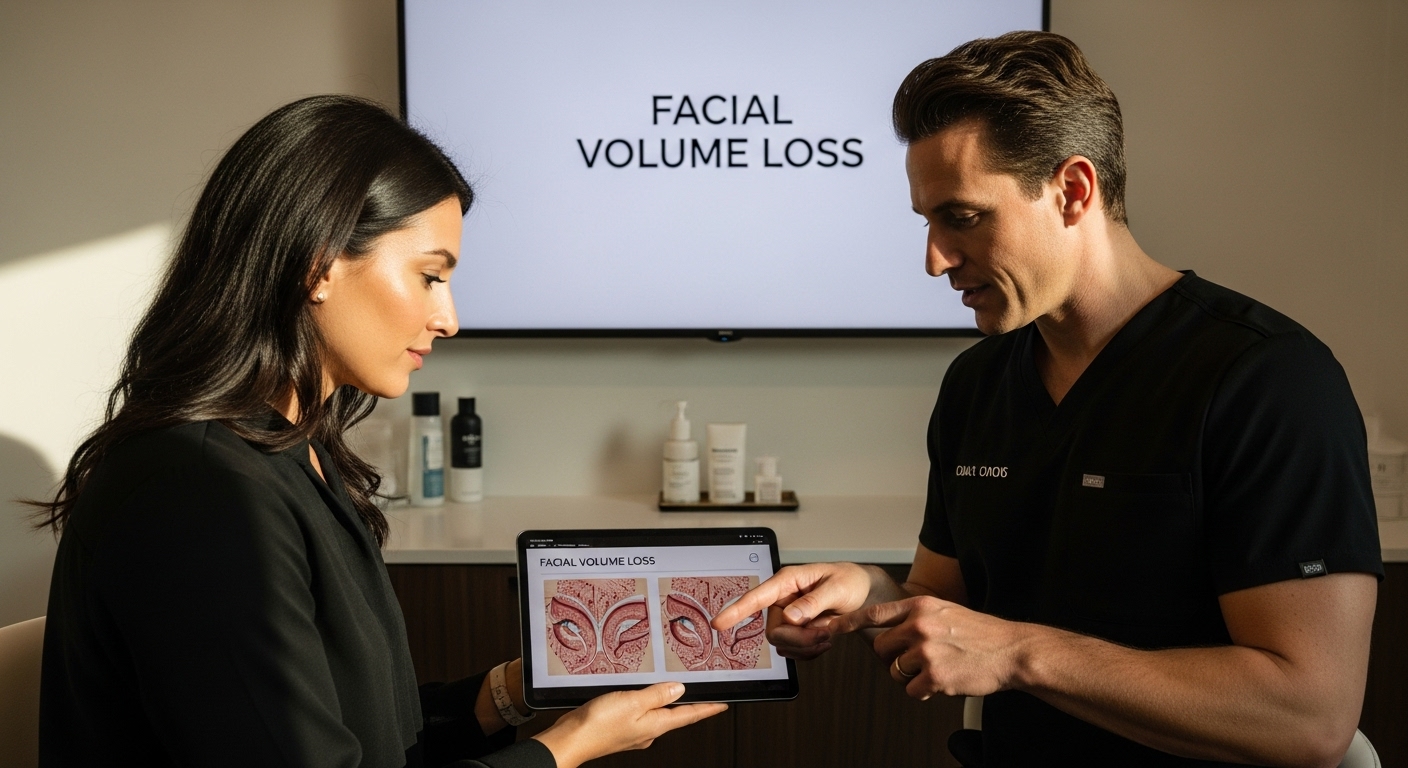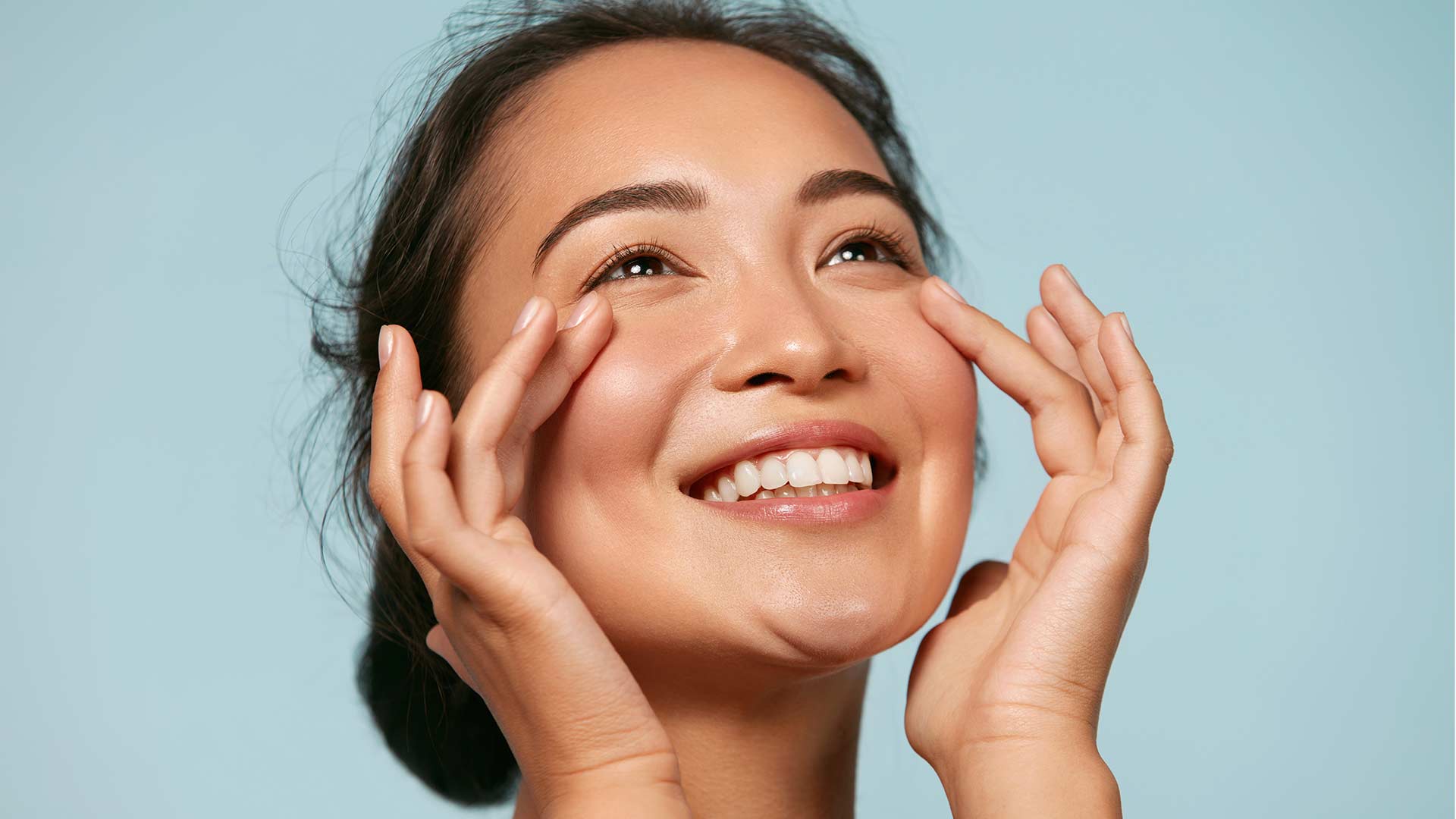Discover what is facial volume loss and its significance in aesthetics, helping you understand the impact on beauty and rejuvenation.
Facial volume loss changes your face in ways that go way beyond a few wrinkles. Researchers have found that bone, fat, skin, and connective tissue all shrink or shift as you age, leading to a totally different facial structure over time. Most people think this just means less fullness in your cheeks but the real surprise is how these deep changes completely reshape your face’s angles and contours long before most people even notice their first line.
Table of Contents
- Defining Facial Volume Loss: What It Is
- The Importance of Facial Volume for Aesthetic Appeal
- Causes of Facial Volume Loss: Understanding Factors
- The Role of Facial Volume in Aging and Beauty
- Exploring Solutions and Treatments for Facial Volume Loss
Quick Summary
| Takeaway | Explanation |
|---|---|
| Facial volume loss is a natural process. | It reflects biological aging, not just cosmetic signs, and involves complex changes beneath the skin’s surface. |
| Key areas affected include cheeks and jawline. | Volume reduction in these regions alters facial contours, leading to a less youthful appearance over time. |
| Genetics play a significant role. | Individual genetic factors influence the timing and extent of facial volume loss, creating a unique aging profile. |
| Environmental factors accelerate volume loss. | Sun exposure, stress, and hormonal changes, especially during menopause, can worsen the effects of aging on facial volume. |
| Non-invasive treatments can restore volume. | Options like dermal fillers and collagen-stimulating injections provide effective ways to rejuvenate facial appearance without surgery. |
Defining Facial Volume Loss: What It Is
Facial volume loss represents a complex biological process of age-related tissue transformation that fundamentally changes facial structure and appearance. Unlike simple wrinkle formation, this phenomenon involves comprehensive changes to the facial framework, impacting multiple tissue layers beneath the skin.
The Biological Mechanics of Volume Reduction
Volume loss occurs through a systematic reduction of critical facial components. The process involves gradual depletion of subcutaneous fat pads, bone density reduction, and skin elasticity decline. Research from the National Institutes of Health confirms that these changes manifest through several key physiological mechanisms:
- Decreased collagen production
- Reduced hyaluronic acid retention
- Diminishing facial fat compartment volume
- Progressive bone resorption
These interconnected processes create a cascading effect that transforms facial contours, leading to visible signs of structural aging. The result is not simply about developing wrinkles but experiencing a comprehensive three-dimensional transformation of facial architecture.
The table below summarizes the primary tissues impacted by facial volume loss and explains how each tissue type contributes to the overall changes in facial structure during aging.
| Tissue Type | Role in Facial Structure | Aging-Related Changes |
|---|---|---|
| Bone | Foundation and facial framework | Bone resorption, loss of structural support |
| Fat | Soft tissue fullness and contour | Shrinking/depletion of fat pads, volume loss |
| Skin | Surface smoothness and elasticity | Reduced elasticity, thinning, sagging |
| Connective Tissue | Support and binding structure | Weakening, loss of tightness |
Understanding Structural Changes
Facial volume loss targets specific anatomical regions with varying intensity. Areas most susceptible include:
- Cheek regions
- Temples
- Under-eye hollows
- Jawline definition
When these areas experience volume reduction, the face transitions from a youthful, plump triangular shape to a more elongated, flattened configuration. This shift occurs gradually, typically beginning in the late twenties and accelerating during perimenopause and post-menopausal periods.
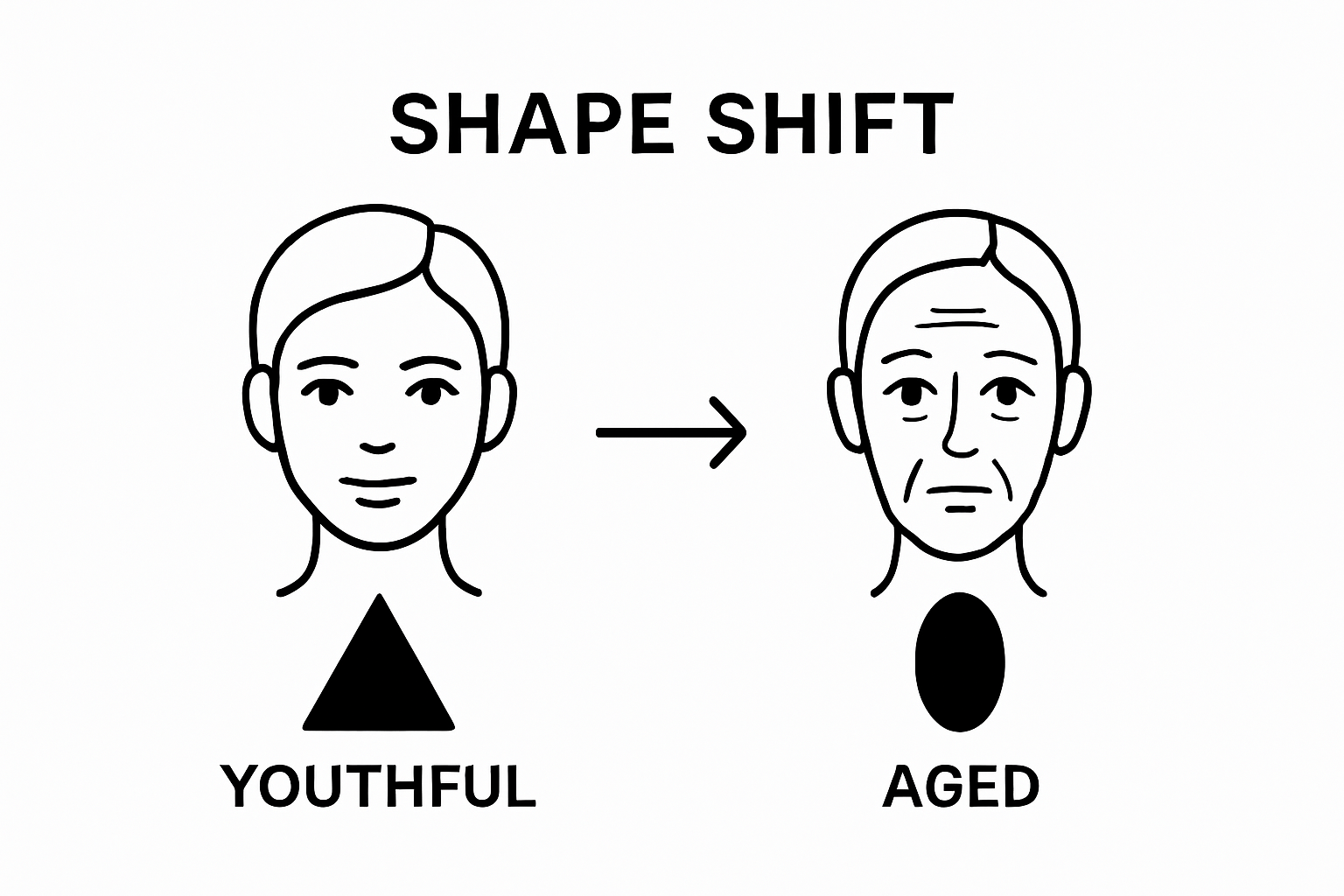
The phenomenon is not merely cosmetic but represents a nuanced interplay of genetic predisposition, environmental factors, lifestyle choices, and hormonal changes. Understanding facial volume loss helps individuals approach age-related facial transformations with informed perspective, recognizing it as a natural biological process rather than an unexpected aesthetic challenge.
The Importance of Facial Volume for Aesthetic Appeal
Facial volume serves as a fundamental indicator of youth, health, and aesthetic attractiveness. More than a superficial characteristic, facial volume represents a complex interplay of structural elements that communicate vitality and emotional perception. Research from aesthetic medicine studies reveals that balanced facial volume is crucial in determining perceived beauty and age.
Perception and Psychological Impact
The human brain is genetically programmed to interpret facial volume as a signal of health and reproductive fitness. Optimal facial volume creates smooth, harmonious contours that suggest youthfulness and wellness. When facial volume diminishes, it triggers psychological responses that unconsciously interpret the changes as signs of aging or potential health challenges.
Key psychological perceptions associated with facial volume include:
- Signals of biological youth
- Indicators of overall health status
- Markers of emotional and physical vitality
- Reflections of genetic robustness
Structural Aesthetics and Balance
Facial volume is not about abundance but precise, strategic distribution. The golden ratio of facial proportions depends on carefully balanced volume across different facial compartments. Learn more about dermal fillers that restore facial harmony.
Areas of particular aesthetic significance include:
- Cheek prominence
- Midface volume
- Jawline definition
- Temple fullness
These regions collectively contribute to what aesthetic professionals term the “youthful triangle” configuration. When volume is symmetrically maintained, it creates an illusion of lift, energy, and inherent attractiveness that transcends simple cosmetic interventions.
Causes of Facial Volume Loss: Understanding Factors
Facial volume loss emerges from a complex interplay of biological, environmental, and lifestyle factors that progressively transform facial structure. Understanding these multifaceted influences provides critical insights into the aging process and potential intervention strategies.
Biological and Genetic Determinants
Research from dermatological studies reveals that facial volume loss is fundamentally rooted in intrinsic aging processes. Genetic predispositions significantly influence how and when volume depletion occurs. The body’s natural metabolic changes trigger systematic reductions in critical facial support structures:
- Decreased collagen production
- Reduced hyaluronic acid generation
- Diminishing fat cell volume and distribution
- Progressive bone density reduction
These inherent biological mechanisms create a foundational framework for facial transformation, with individual genetic blueprints determining the specific trajectory of volume loss.
Environmental and Lifestyle Influences
External factors complement genetic programming, accelerating or modifying facial volume reduction. Key environmental contributors include:
- Prolonged sun exposure
- Chronic stress
Learn more about how facial treatments can help counteract these effects.
Hormonal shifts, particularly during perimenopause and menopause, dramatically impact facial volume. Estrogen decline leads to accelerated collagen breakdown and reduced fat retention, causing more pronounced structural changes. Lifestyle choices such as smoking, poor nutrition, and inadequate hydration further compound these natural deterioration processes.
Here is a table that organizes the major causes of facial volume loss, categorizing them as either biological/genetic or environmental/lifestyle factors for easier comparison and reference.
| Factor Category | Specific Contributors |
|---|---|
| Biological/Genetic | Decreased collagen production, reduced hyaluronic acid generation, diminishing fat cell volume, bone density reduction, genetic predispositions |
| Environmental/Lifestyle | Sun exposure, chronic stress, hormonal shifts (e.g., menopause), smoking, poor nutrition, inadequate hydration |
The interaction between genetic predisposition and environmental factors creates a unique volume loss profile for each individual. This personalized aging pattern underscores the importance of tailored aesthetic approaches that recognize the nuanced, interconnected nature of facial volume transformation.
The Role of Facial Volume in Aging and Beauty
Facial volume transcends mere physical appearance, serving as a sophisticated biological narrative that communicates youth, vitality, and genetic potential. Research in aesthetic medicine demonstrates that facial volume is a critical indicator of beauty, health, and chronological age.
Biological Markers of Aesthetic Perception
Facial volume acts as a dynamic visual language, communicating complex biological information through subtle structural changes. The human brain has evolved to interpret facial volume as an immediate, unconscious assessment of reproductive fitness and overall wellness. Key biological markers embedded in facial volume include:
- Symmetry of facial contours
- Smooth, plump skin texture
- Balanced fat distribution
- Structural integrity of facial tissues
These markers provide instantaneous signals about an individual’s genetic health, metabolic efficiency, and potential for successful reproduction.
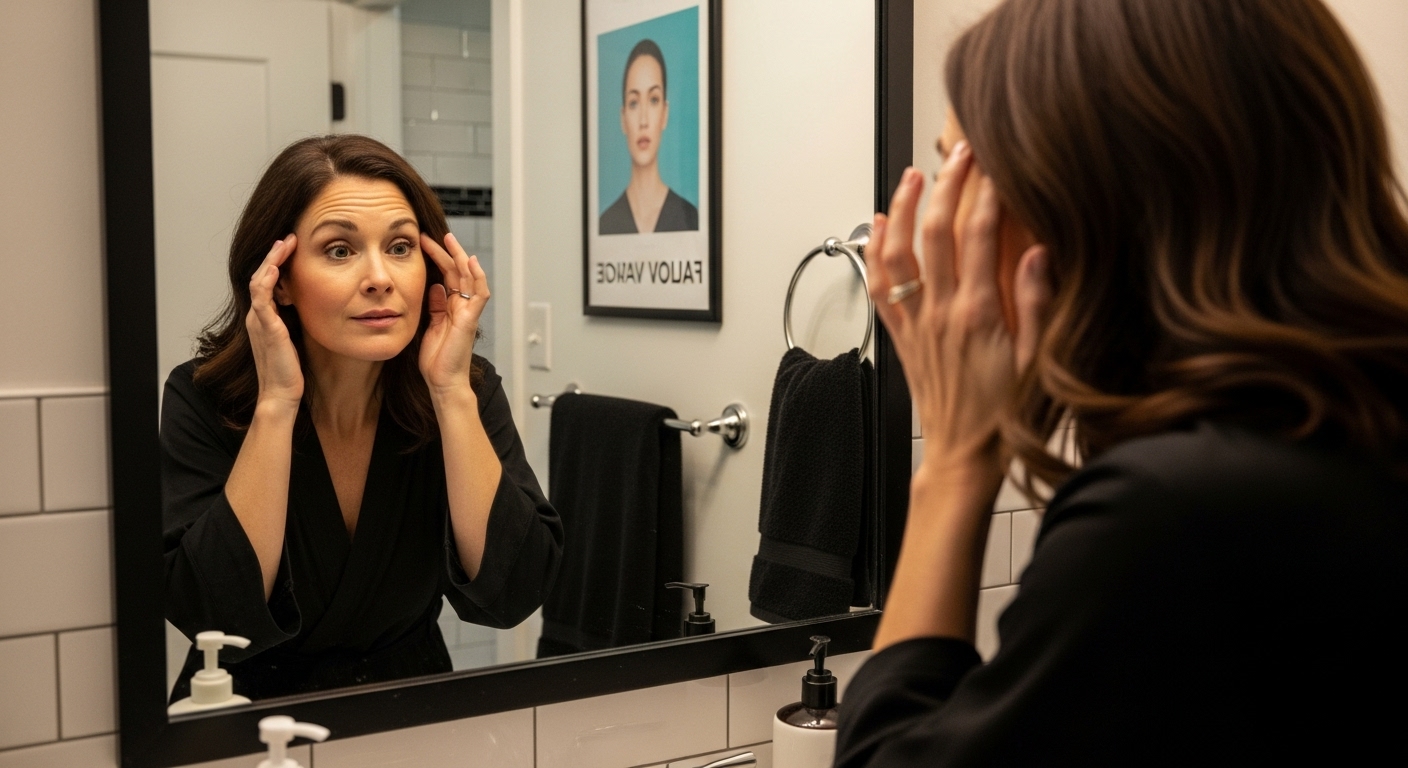 The brain processes these volume-related cues within milliseconds, forming rapid and profound aesthetic judgments.
The brain processes these volume-related cues within milliseconds, forming rapid and profound aesthetic judgments.
Beauty Standards and Volumetric Harmony
Aesthetic beauty is fundamentally about proportional balance and harmonious volume distribution. The ideal facial configuration follows precise geometric principles where volume is strategically placed to create visual harmony. Explore how our dermal fillers restore facial balance.
Critical facial regions that define aesthetic appeal include:
- Cheek prominence
- Midface volume
- Jawline definition
- Temporal fullness
As facial volume diminishes with age, these regions lose their youthful projection, causing a cascade of aesthetic transformations. The gradual flattening and sagging signal biological aging, triggering complex psychological responses related to perceived attractiveness and vitality.
Exploring Solutions and Treatments for Facial Volume Loss
Addressing facial volume loss requires a nuanced, comprehensive approach that combines advanced aesthetic technologies with personalized treatment strategies. Research in cosmetic dermatology reveals multiple innovative interventions designed to restore facial contours and rejuvenate appearance.
Non-Invasive Volumizing Techniques
Aesthetic medicine now offers sophisticated solutions that strategically target volume restoration without extensive surgical intervention. These techniques focus on stimulating natural regenerative processes and providing immediate structural support:
- Dermal fillers with hyaluronic acid
- Collagen-stimulating injectable treatments
- Radiofrequency microneedling
- Platelet-rich plasma (PRP) therapies
Each method addresses volume loss through different mechanisms, allowing practitioners to customize treatments based on individual facial anatomy and aging patterns. The goal is not merely filling spaces but creating harmonious, natural-looking rejuvenation.
Comprehensive Volumetric Restoration
Effective volume restoration demands a holistic approach that considers multiple facial layers and underlying physiological changes. Learn more about our skin boosting treatments that complement these advanced techniques.
Key treatment considerations include:
- Precise product selection
- Individualized treatment mapping
- Gradual, progressive restoration
- Maintenance of natural facial expressions
Modern aesthetic interventions recognize that facial volume is not about aggressive augmentation but strategic, subtle enhancement that respects individual facial architecture. The most successful treatments create imperceptible yet transformative improvements, restoring youthful vitality without obvious artificial interventions.
Restore Youthful Confidence With Personalized Facial Volume Solutions
Have you noticed changes in your facial structure such as sunken cheeks or loss of definition along your jawline? This article explained how facial volume loss is more than just wrinkles—it is a three-dimensional transformation caused by reduction of fat pads, bone changes, and decreased skin elasticity. Many women feel these changes negatively impact their self-confidence and do not know where to turn for natural-looking improvements. At Monaz Clinic, we offer advanced non-surgical options that restore harmony while preserving your unique features. Find more details on our dermal fillers that restore facial harmony and discover versatile skin boosting treatments designed for subtle, long-lasting rejuvenation.
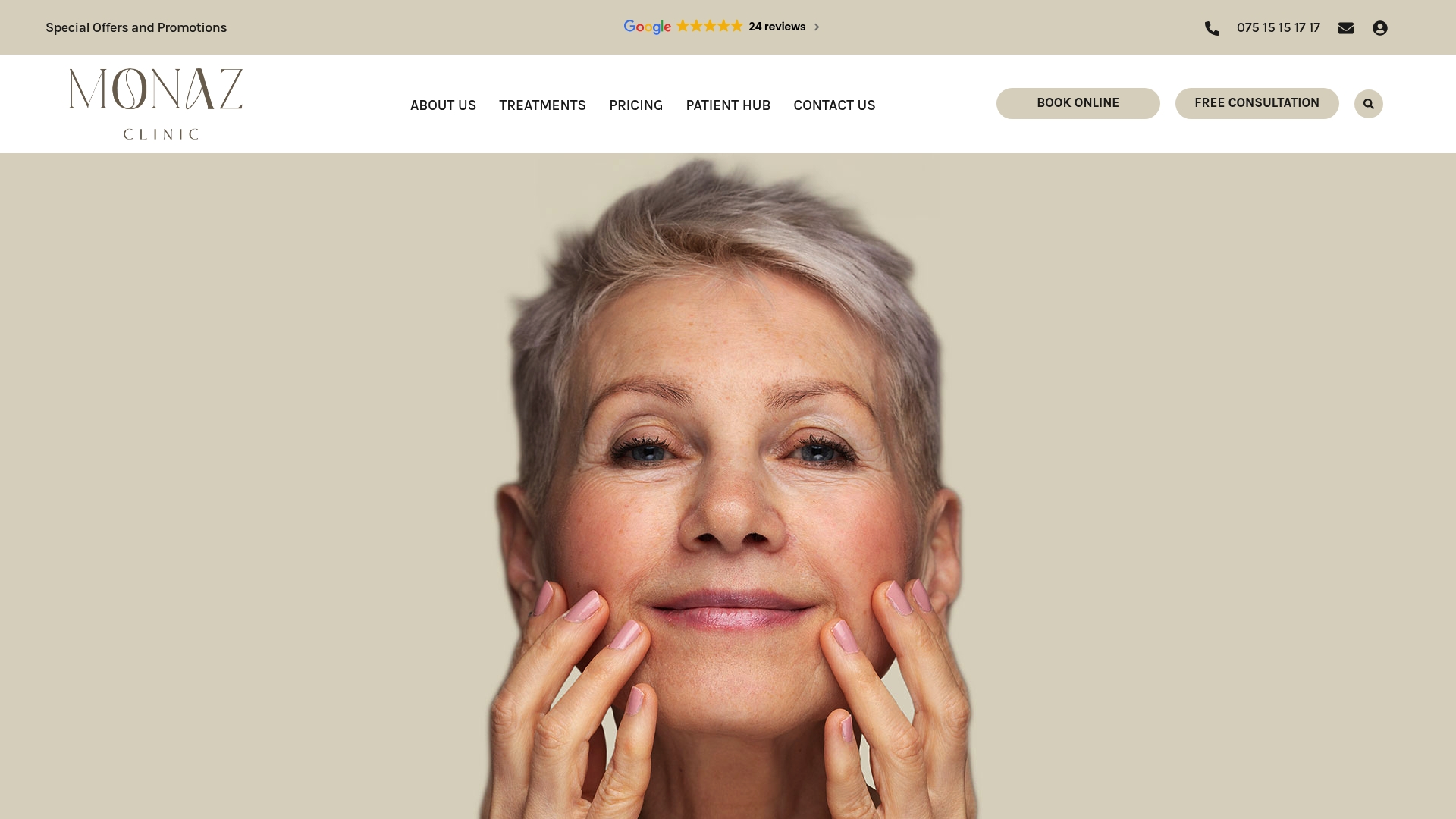
Imagine regaining balanced contours and glowing skin without surgery or pressure. Book a complimentary consultation with our Harley Street specialists today to explore expert, one-on-one care in a setting rooted in medical excellence. Take the first step and visit Monaz Clinic to reveal your best self now.
Frequently Asked Questions
What causes facial volume loss?
Facial volume loss is primarily caused by biological aging processes, including decreased collagen production, reduced hyaluronic acid generation, and diminishing fat cell volume. Environmental factors such as sun exposure and lifestyle choices like smoking also contribute.
What areas of the face are most impacted by volume loss?
The areas most susceptible to facial volume loss include the cheeks, temples, under-eye hollows, and jawline. These regions experience significant changes, leading to a more elongated and flattened facial appearance.
How does facial volume loss affect perceived beauty?
Facial volume loss can alter the balance and symmetry of facial features, which are key indicators of youth and health. Diminished volume may lead to alterations in perceived attractiveness and vitality, triggering psychological responses related to aging.
What treatments are available for restoring facial volume?
There are several non-invasive treatments available to restore facial volume, including dermal fillers with hyaluronic acid, collagen-stimulating injectables, radiofrequency microneedling, and platelet-rich plasma therapies. These methods aim to provide subtle enhancements and rejuvenate facial contours.

